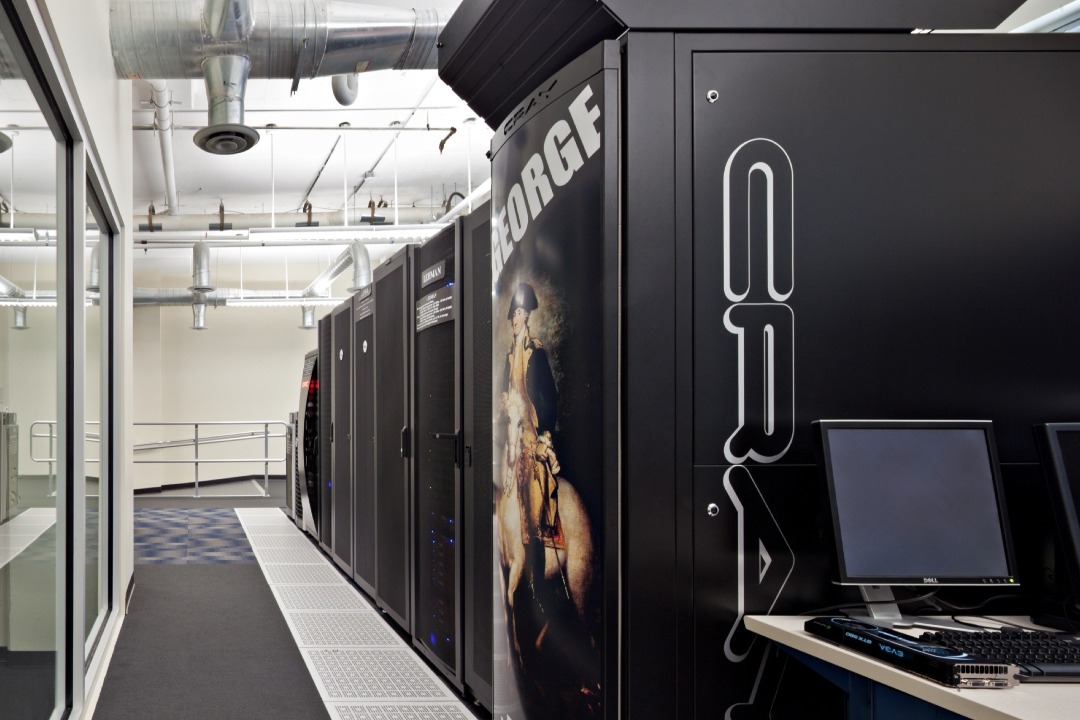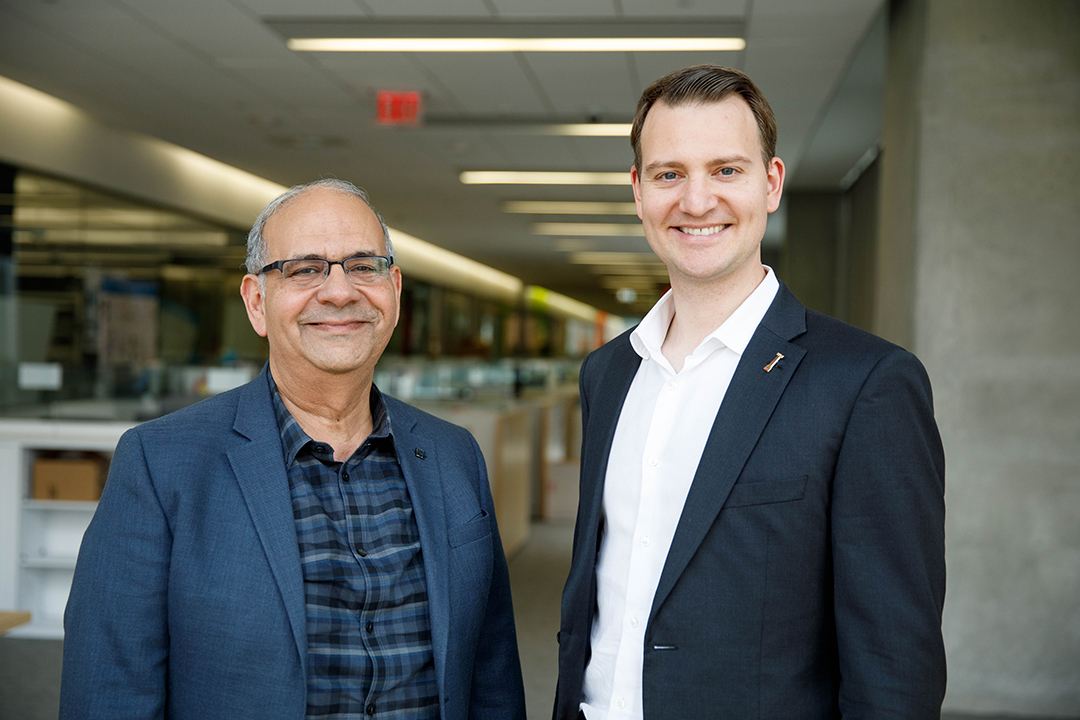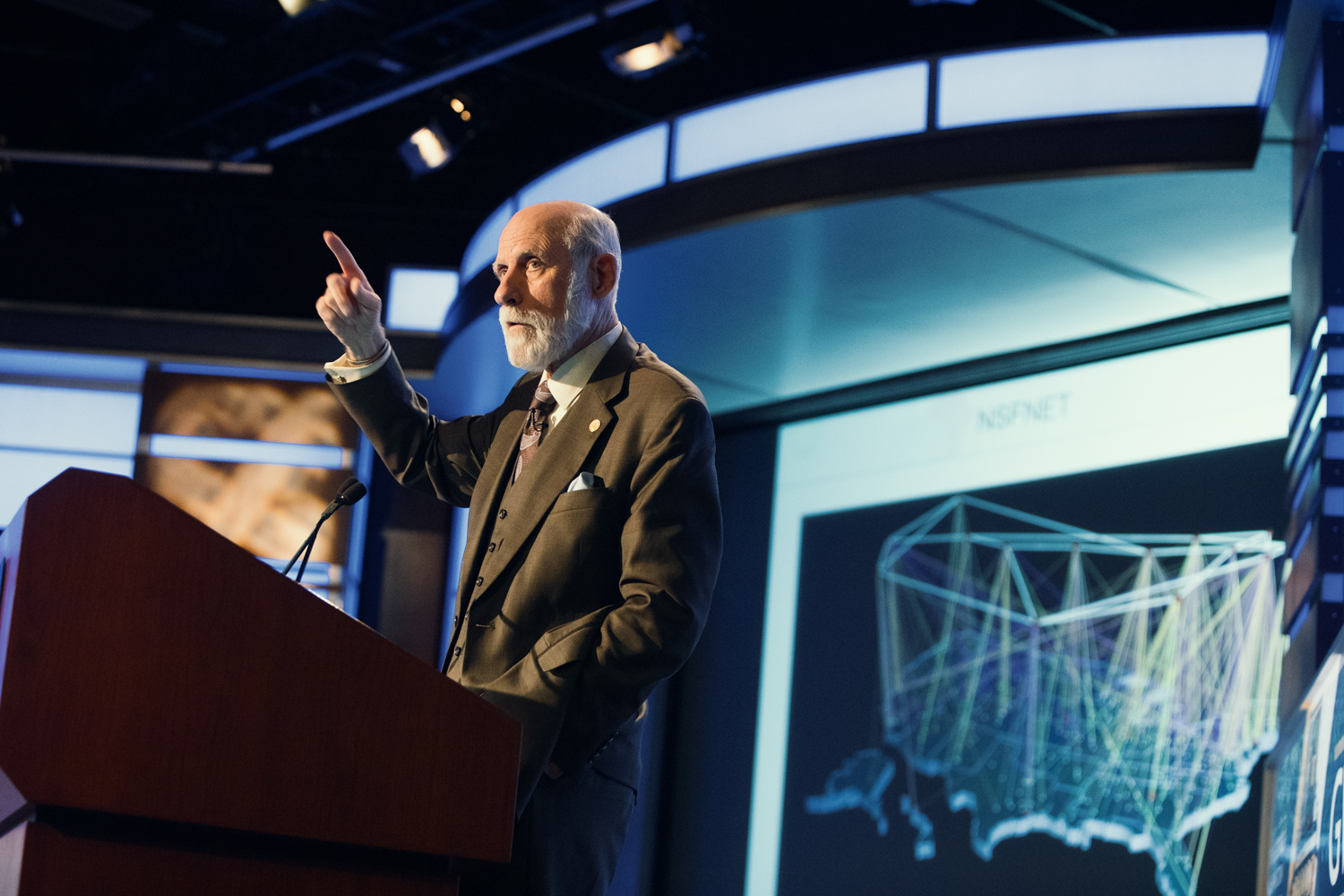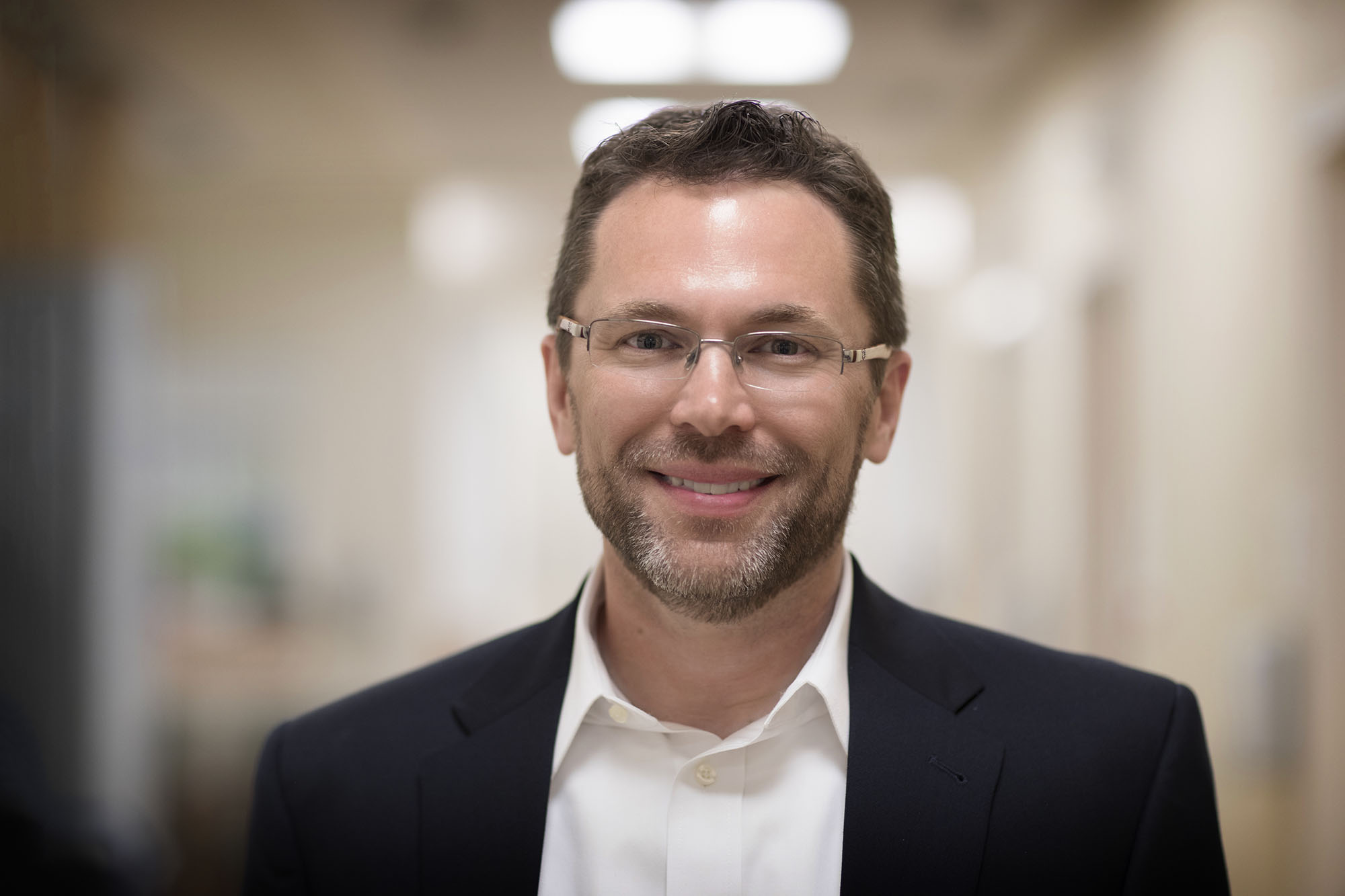By Kristen Mitchell
Imagine a world where you never had to wait for a document to download or a video to stream, where a self-driving car was aware of everything around it, and you didn’t question the security of online banking.
Two George Washington University School of Engineering and Applied Science researchers are pioneering a new way to process information—using light instead of electrons—that could transform the era of digitalization driven by the need to quickly, efficiently and securely process data.
Associate Professor Volker Sorger and Professor Tarek El-Ghazawi with the SEAS Department of Electrical and Computer Engineering are jointly developing photonic processing, an entirely novel set of concepts and systems capable of processing information at the speed of light; it is more energy efficient than anything currently available and enables a new era of real-time computing. They have secured more than $5.2 million in external funding over the past several months to pursue their work, which could revolutionize the capabilities of technology from smart toothbrushes to self-driving vehicles.
Over the past half century, engineers have been improving on existing electronic computer processing capabilities. These improvements have aligned with Moore’s Law, a computing principle first proposed in 1965 that says the speed and capability of microchip transistors is expected to double every two years. This is why electronic devices have become smaller, more capable and less costly over time.
The challenge is that the runway on new improvements to existing data processing technology is facing an abrupt end. Within the next few years there will be little room for improvements, and engineers will have to return to changing the hardware itself to continue growth. Through their work on photonic processing—a term they coined—Dr. Sorger and Dr. El-Ghazawi are well on their way to building a new analog computing infrastructure that could transform the technology landscape.
"We are really looking for revolutionary, outside-the-box thinking systems, concepts, ideas and platforms that are completely different," Dr. Sorger said. "We are not just making it a little better and adding our mark, we are actually opening the book from scratch and wanting to make it fundamentally better and different."
Dr. Sorger, one of two GW professors to receive a Presidential Early Career Award for Scientists and Engineers this year, focuses on building the physical hardware where the processing can be done. He has an extensive background in the field of nanophotonics, the study of light’s behavior on a very small scale. Much of this work is done in the GW Nanofabrication and Imaging Center. Dr. El-Ghazawi, whose work focuses on high-performance computing and computer architecture. He explores how photonic components can be put together to build systems and how such systems can be used by scientists to solve real-life problems.
"The synergy that Volker and I have, which is quite unique, allows us to have a comprehensive vision of these types of problems and figure out ways to approach it from both sides," Dr. El-Ghazawi said.
The faculty partners have been working on internal research and development for the past four years, and a cross-disciplinary "super team" of their respective staff meet weekly to brainstorm novel ideas for computing and information processing. The results of their R&D and the technological impact of that partnership are starting to gain traction.

Dr. El-Ghazawi uses experimental supercomputers in his High-Performance Computing Lab (HPCL) on the Virginia Science and Technology campus. (Photo provided by Dr. El-Ghazawi)
The Processing Gap
Dr. Sorger and Dr. El-Ghazawi aim to close what they call the processing gap in modern technology. This gap is the difference between how much data can be processed at the source and how much data engineers want to process at the source.
For example, smart toothbrushes that connect to Bluetooth can do things like tell users how much pressure they are applying to their teeth when they brush and which molars they’re skipping over. This data can often be viewed on a mobile smartphone application, but before it gets there, the processing is done at a large data center that could be thousands of miles away. Dr. Sorger and Dr. El-Ghazawi want to use photonic capabilities to develop specialized co-processors that would allow more data to be processed where it is being generated before ever being sent to an off-site data center, making it more efficient. This is a concept called edge computing which is critical for the Internet of things.
"The goal is not for these processors to replace the existing ones, but to work in tandem with existing ones for selected specific tasks and augment existing computers," Dr. Sorger said. "This is a trend we see in the computer world."
This summer Dr. Sorger was named the principal investigator of a three-year $3.15 million project with a majority of its funding from the Office of Naval Research to build a convolutional neural network, a type of machine learning that can classify and sort information such as different images. This novel system enables massive amounts of data to be processed in near real-time and with a small footprint. This is not currently possible in electronics.
Dr. Sorger is working on this project alongside Dr. El-Ghazawi and colleagues from the University of California, Los Angeles, University of Texas at Austin and Omega Optics Inc.
The military seeks this type of processing power to improve timely decision making in, for example, military drones that must react to their environment. Civilian applications such as autonomous and self-driving cars could also benefit. The idea is to borrow concepts from the human brain and pair them with massive parallelism given by optics to invent processors with unprecedented performance, Dr. Sorger said.
"These are blind objects that need to make sense of the world surrounding them and, so they aren’t flying into a person," Dr. Sorger said. "This means they have to understand that what they are ‘seeing’ is indeed a person in order to make accurate and correct decisions rapidly. This is where real-time processing comes in."
The research duo was also recently awarded $1.2 million from the Army Research Office to develop an ultra-fast photonic multiplier processor that can revolutionize applications such as public key cryptography, an encryption technique for secure data communication. Along with SEAS research professors Mario Miscuglio and Yousra Alkabani, the team will pioneer and build a processing system that, when scaled up, can handle up to 1 Peta operation (1 million x 1 billion operations) per second while requiring just a fraction of the power used by current systems.
This summer Dr. El-Ghazawi was named principal investigator on a $675,000 grant from the Air Force Office of Scientific Research to develop an integrated photonics computing system, from device to architecture. Dr. Sorger is a co-PI on the project. The team realized that since photons never stand still, they could perform computations by simply routing light in a certain direction. This enables a novel in-the-network processing without interruption.
"I’m sure there are others who have thought about this, but there are not a lot of them," Dr. El-Ghazawi said. "There’s not really a lot of them that had the vision of the entire system and the way that we see it."

Dr. Sorger (left) and Dr. El-Ghazawi have been working on internal research and development for the past four years. A cross-disciplinary “super team” of their respective staff meet weekly to brainstorm novel ideas for computing and information processing. (William Atkins/ GW Today)
The Bigger Picture
This new research direction fits into larger conversations about the future of computing happening at both the national and international level. In 2015, President Barack Obama launched the National Strategic Computing Initiative (NSCI), a national effort designed to create a strategic vision and collaboration between industry and academia to maximize the benefits of high-performance computing for the United States. The initiative aimed to outline a path forward for future systems after the limits of current technology and to deliver on those capabilities.
Late last year, President Donald Trump signed the National Quantum Initiative (NQI) into law. This legislation established a coordinated multiagency program to support research and training in quantum information science, a rapidly emerging field that could change the landscape of informational processing and have a significant impact on national security and world economies. China and Europe are heavily investing in this domain, and the United States does not want to fall behind, Dr. Sorger said.
This national and international focus on computing technology has renewed the push for federal grant funding on these subjects from the National Science Foundation, defense and intelligence research offices, and industry.
Dr. Sorger and Dr. El-Ghazawi’s research direction has netted $8 million in total funding since they started applying for grants in 2015, and their work together in this field is now beginning to shape this new era of hardware development. They plan to continue building on their successes in photonic processing research at GW and explore commercialization potential for their inventions by filing more than 10 patents.
“This is not an academic exercise. The evidence that it has serious, real-life implications is not only the fact that we were able to get about $8 million of funding for it, it’s also who is behind those $8 million,” Dr. El-Ghazawi said. “There is clear evidence that we are doing something here that probably industry, will be extremely interested in it.”





